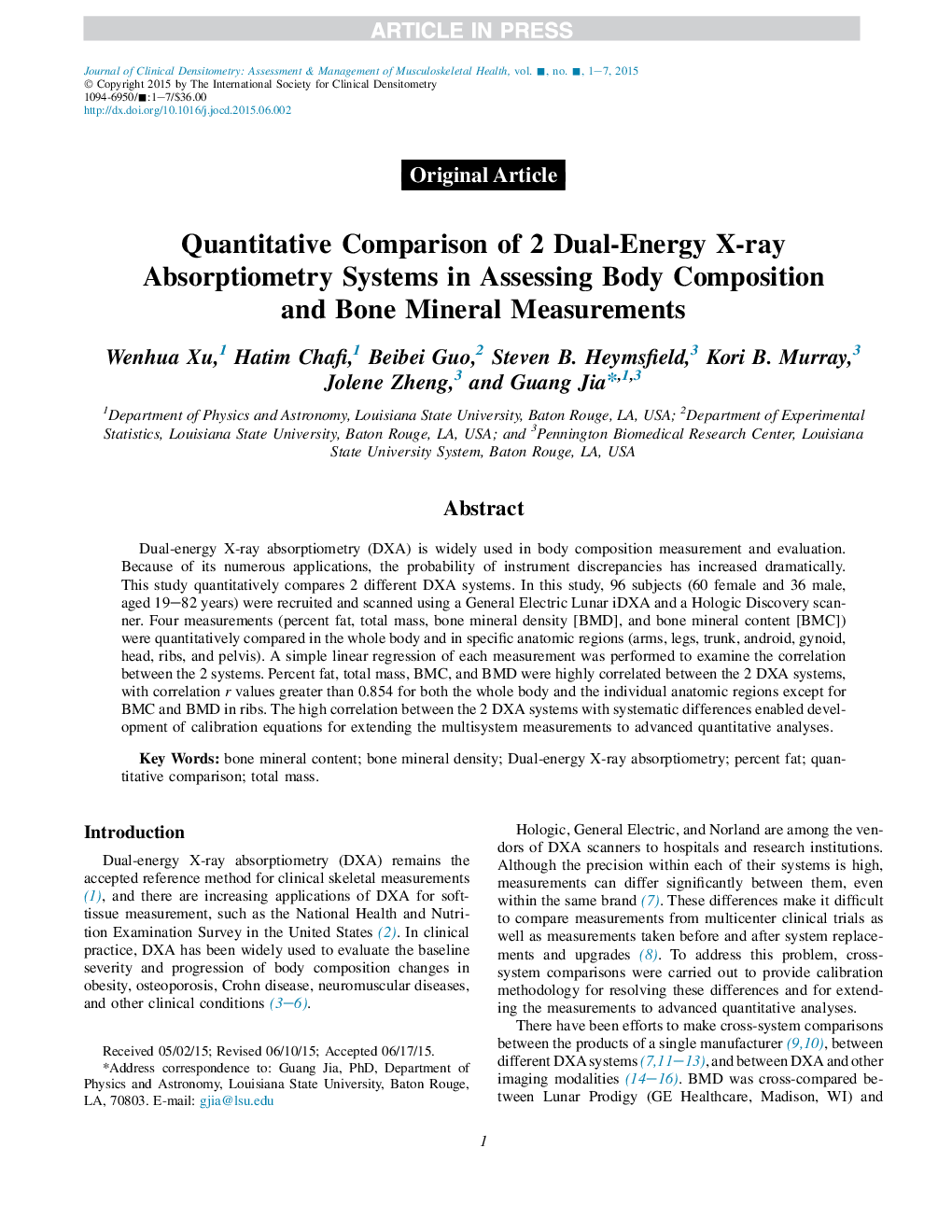| Article ID | Journal | Published Year | Pages | File Type |
|---|---|---|---|---|
| 8723273 | Journal of Clinical Densitometry | 2016 | 7 Pages |
Abstract
Dual-energy X-ray absorptiometry (DXA) is widely used in body composition measurement and evaluation. Because of its numerous applications, the probability of instrument discrepancies has increased dramatically. This study quantitatively compares 2 different DXA systems. In this study, 96 subjects (60 female and 36 male, aged 19-82Â years) were recruited and scanned using a General Electric Lunar iDXA and a Hologic Discovery scanner. Four measurements (percent fat, total mass, bone mineral density [BMD], and bone mineral content [BMC]) were quantitatively compared in the whole body and in specific anatomic regions (arms, legs, trunk, android, gynoid, head, ribs, and pelvis). A simple linear regression of each measurement was performed to examine the correlation between the 2 systems. Percent fat, total mass, BMC, and BMD were highly correlated between the 2 DXA systems, with correlation r values greater than 0.854 for both the whole body and the individual anatomic regions except for BMC and BMD in ribs. The high correlation between the 2 DXA systems with systematic differences enabled development of calibration equations for extending the multisystem measurements to advanced quantitative analyses.
Keywords
Related Topics
Health Sciences
Medicine and Dentistry
Endocrinology, Diabetes and Metabolism
Authors
Wenhua Xu, Hatim Chafi, Beibei Guo, Steven B. Heymsfield, Kori B. Murray, Jolene Zheng, Guang Jia,
